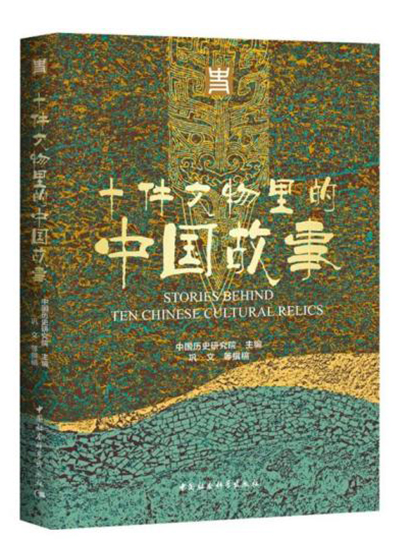Historical stories behind national treasures

Stories Behind Ten Chinese Cultural Relics
Stories Behind Ten Chinese Cultural Relics, co-written by a host of Chinese archaeologists and historians, tells the story of Chinese history through national treasure-class cultural relics. In the popular collection, the discovery stories and connotations of 10 representative cultural relics are presented, demonstrating underlying Chinese concept, spirit, and value in popular and refined language.
The relics were mostly selected from among those collected by the Chinese Archaeological Museum, while some were chosen from other major cultural relic collection institutions, collectively serving as a representative display of China’s more than 5,000 years of civilization.
The selected relics range from the Taosi culture in the late Neolithic Age, when various civilizations emerged on this land, to the eve of the founding of the People’s Republic of China in 1949, covering more than 5,000 years of Chinese civilizational history. They encompass the remarkable turquoise-inlaid dragon-shaped bronze object of the Erlitou culture of the Bronze Age, the rare ivory cup unearthed from the Tomb of Fu Hao in the Ruins of Yin, and the mysterious He zun [ritual wine vessels] inscribed with the earliest expression of Zhong Guo [China]. Also among the treasures are the Han Dynasty (202BCE–220) brocade armband embroidered with the phrase “five stars rise in the east, benefit China” and the Tang Dynasty (618–907) animal-head-shaped agate cup, mirroring the prosperity and inclusiveness at the time. In addition, The Shian Kian Weekly Review served as a witness to the magnificent revolutions of modern China.
Most of common cultural relics are covered, including pottery, jade articles, bronze objects, ivory ware, silk fabrics, calligraphic works and paintings, gold and silver vessels, and paper prints. Each item selected is representative of its respective categories. The Western Zhou (c. 11th century–771 BCE) animal-shaped zun unearthed from Zhangjiapo, Xi’an, Shaanxi Province, is impressive for its marvelous shape, exquisite decoration, and complex fabrication methods. It represents the pinnacle of Zhou bronze artisanship. “Riverside Scene at Qingming Festival,” housed in the Palace Museum, represents the most renowned genre painting in the history of Chinese painting.
The book is written by a strong team of authors; archaeologists discuss the cultural relics while historians tell their stories. The narrator of the opening chapter on a plate decorated with the earliest dragon image, He Nu, has long served as the leader of an archaeological excavation team at the Taosi site. The segment on the large turquoise-inlaid dragon-shaped object unearthed at the Erlitou site is authored by Xu Hong, an archaeological “celebrity” who has long been the leader of an archaeological team at Erlitou. The section on the Han brocade armband is contributed by Yu Zhiyong, curator of Xinjiang Uygur Autonomous Region Museum where the piece is preserved.
Edited by YANG LANLAN

 PRINT
PRINT CLOSE
CLOSE